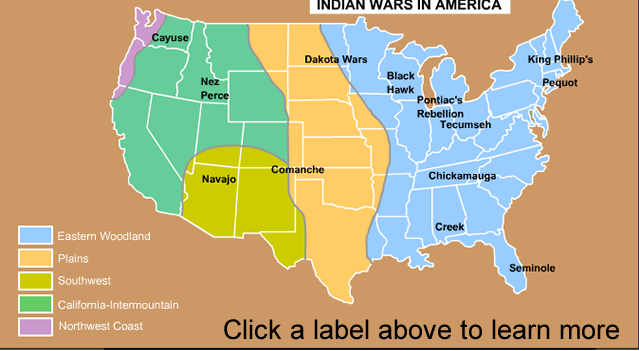Kit Carson Becomes a Hero
The Comanche Wars were nothing more than isolated skirmishes between the Comanche, Kiowa, and other southern plains tribes and American settlers in the flatlands of northern Texas and southern Oklahoma. Like most of the Indian Wars, the Comanche Wars were fought because of White encroachment on Indian lands. In the First Battle of Adobe Walls (1864), named for a ramshackle trading post near modern-day Amarillo, U.S. Military forces under Kit Carson defeated a huge force of Comanche and Kiowa warriors that outnumbered them by over 4,000. The result of the battle made Kit Carson a frontier hero.
Broken Promises; the Treaty of Medicine Lodge
As White settlement in the southern plains increased in the early and mid 1800's, Comanche villages were decimated by diseases such as smallpox and cholera that wiped out nearly 80 percent of the population. In 1867, the struggling Comanche signed the Treaty of Medicine Lodge with the U.S. Government. In the treaty, the Comanche surrendered most of their ancestral land in exchange for churches, schools, and annual payments. In addition, the government agreed to regulate the White buffalo hunters, who had decimated the great herds. The government, however, failed to keep this promise.
Fort Sill
In 1874, Comanche warriors under White Eagle ambushed a group of 28 buffalo hunters in the Texas Panhandle, in what came to be known as the 2nd Battle of Adobe Walls. The attack failed, and U.S. military forces forced the remaining resistance into a tiny reservation known as Fort Sill in Oklahoma. The reservation totaled only 5,000 square miles - a fraction of the Comanche ancestral lands. In 1892, the reservation was reduced in size once again to only 480,000 acres.
Click on the text in the map to learn about each of the U.S. Government-Indian Wars. |

|